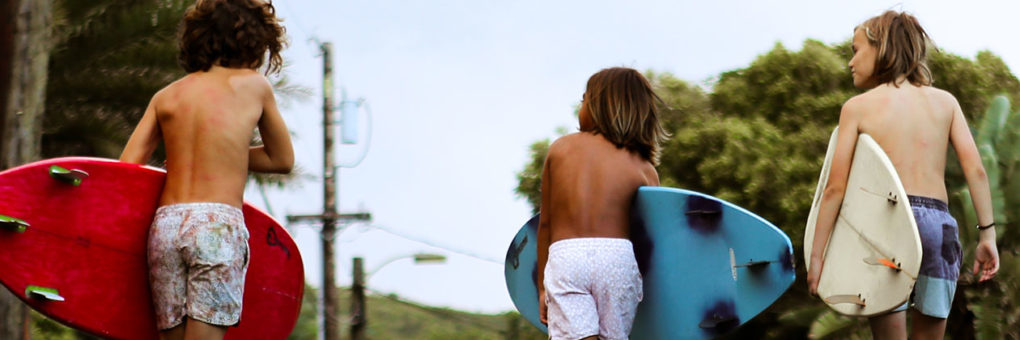
Hawaiian Pidgin Dictionary
General Terms
-Uncle/Aunty: how locals refer to elders, regardless of familial connection
-Grindz: delicious food, as in at a party or a favorite food establishment
-Aloha: specifically the Hawaiian word for “love,” aloha is a catch-all word of good intentions and feelings. Used as a greeting or parting, but also means affection, kindness and goodness
-Aloha Spirit: a philosophy or way of being in Hawaii, more specifically the feeling of gratitude, friendship, understanding, and solidarity
-Mahalo: Hawaiian word for “thank you”
-‘Ono: Hawaiian word for “delicious,” Used most often in combination with “grindz”
-‘Ohana: Family, but used beyond blood relations to express love and commitment within communities
-Tutu: Hawaiian word for Grandma or Grandpa
-Kama’aina: Literally, child of the land. Used to describe native born and any long-term resident of the Hawaiian islands, regardless of racial background
-Haole: Translates to “without the breath of life.” Traditionally means foreigner, but often refers to a person of Caucasian ancestry. Can be derogatory, but not always
-Ho’ike: a cultural presentation to show or display Hawaiian music, hula and song
-Kokua: Hawaiian word for Help or support. Heard most frequently in the phrase, “Mahalo for your kokua” (thank you for your assistance)
-Howzit: a common, informal Hawaiian greeting meaning “How are you?” Used often in conjunction with “braddah,” which is a colloquial term for “brother” or “friend.”
-Keiki: Hawaiian word for “children”
-Lanai: Hawaiian word for “outdoor patio or balcony”
-Pau: Hawaiian word for “done” or “finished”
-Lei: A necklace made of flowers, shells, leaves, or kukui nuts. Locals wear them to celebrate special occasions of all sorts
-Shaka: classically hawaiian hand gesture of extended thumb and pinkie, which generally symbolizes the “aloha spirit,” started by Hamana Kalili of Laie
-Wahine & Kāne: Hawaiian words for, respectively, “women” and “men”
Food Menu Terms
-Poke’: Specifically the hawaiian verb for “section” of “cube,” typically meaning raw seafood, especially ahi tuna
-Ahi: larger species of tuna from the yellowfin or bigeye families
-Katsu: a Japanese style preparation of seasoned protein dredged in flour and sweet wine eggwash, then breaded and fried-Kalua
-Shoyu: Hawaiian term for “ Japanese soy sauce”
-Lomi: typically spoken as lomi lomi, Hawaiian word meaning “to massage” in reference to the salmon preparation
-Kalua: traditional Hawaiian cooking method that utilizes an imu, a type of underground oven, often mimicked today using modern cooking techniques
-Kiawe: Hawaiian version of mesquite wood, imparts a smoky flavor
-Kalbi: Korean style cross cut barbequed short ribs
-Huli Huli: Hawaiian “turn turn” referring to rotisserie cooking technique
-Uala: Hawaiian word for purple sweet potato
-Hau’ula: town of the north east coast of Oahu, where Chef Kaimana hails from!
-Moana Street: translates to “ocean.” The name of a street in the north east coastal town of Laie where the Kekauoha family hails from, and where Uncle’s was born!
-Queen Street: Oahu café located between Honolulu and Pearl City, known for the best tuna poke’
-Luau: a traditional Hawaiian party or feast typically accompanied by entertainment. Also a term used when referring to cooked taro leaves.
-Malasada: Portuguese hole-less donut, aka, the best fried dough you’ll ever eat
-Otai: a Tongon drink typically made with water, coconut, coconut cream and fresh fruit
-Poi: a traditional Hawaiian staple, this is a taro root porridge that locals go crazy for
